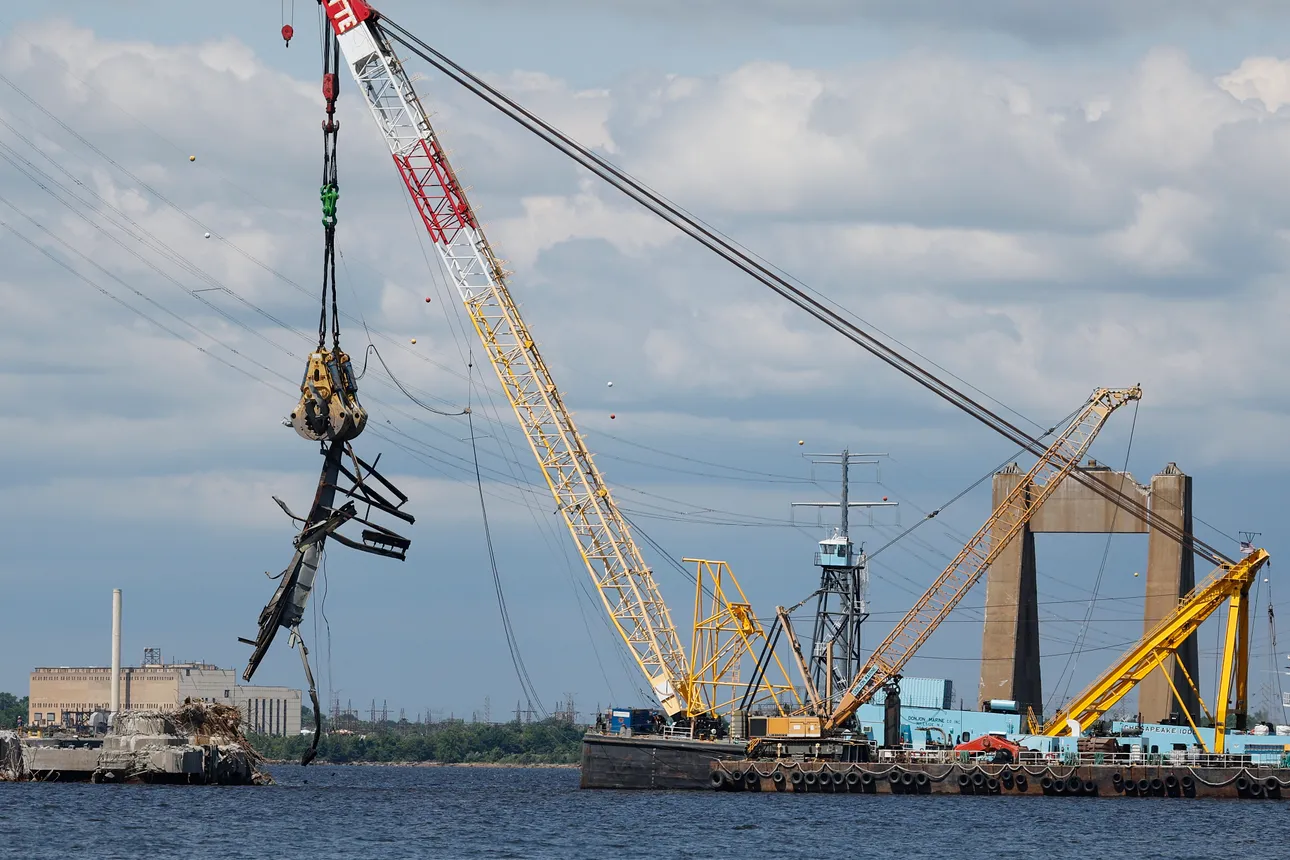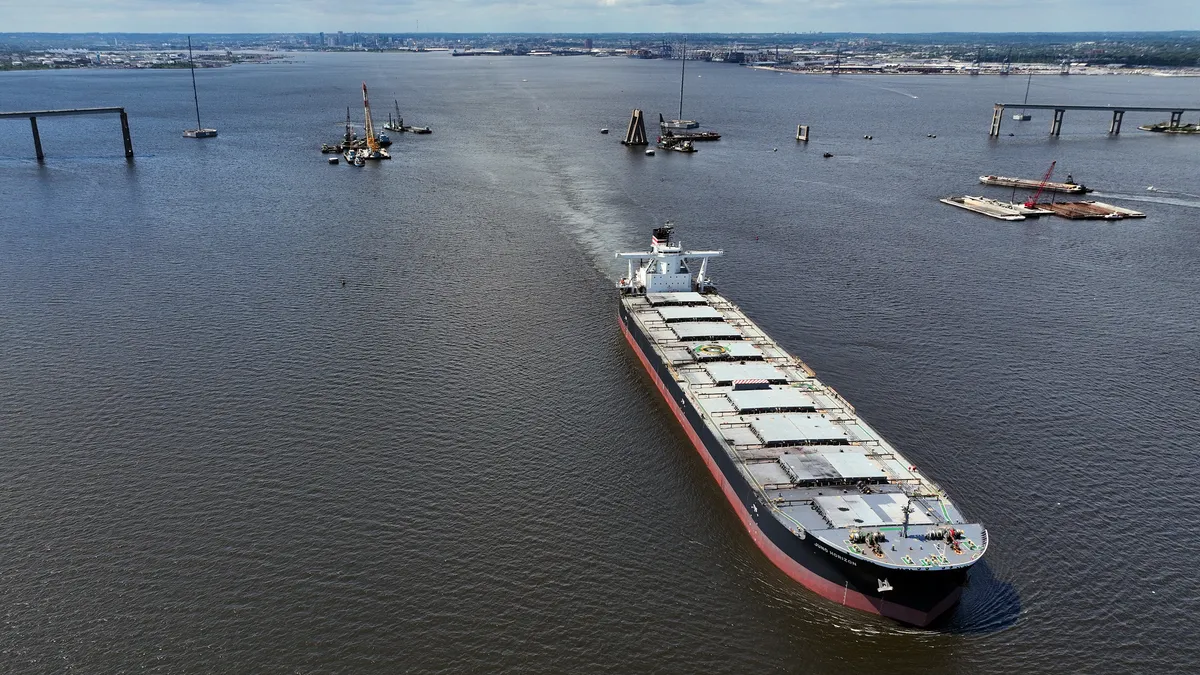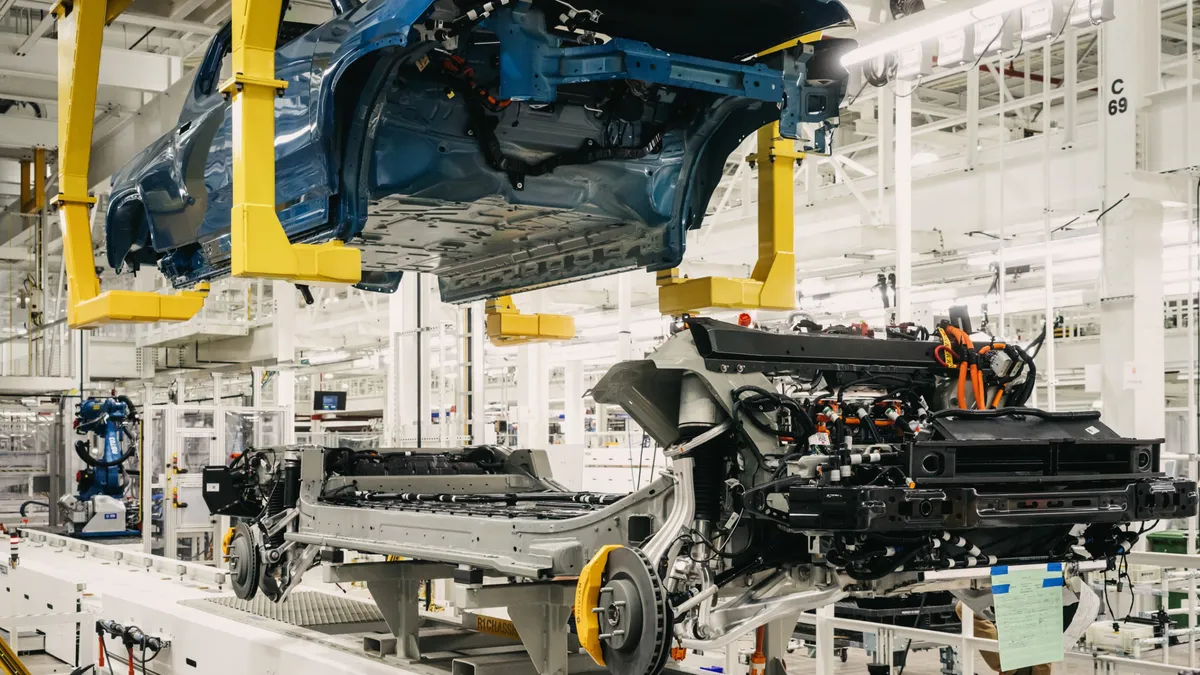Following the Francis Scott Key Bridge collapse in March, many shippers and carriers asked Maryland Port Administration Executive Director Jonathan Daniels a common question: How can we help?
“Our answer was pretty simple,” Daniels told Supply Chain Dive in an interview Tuesday. “‘You can come back when the channel opens.’”
The Port of Baltimore leader’s reply revealed perhaps the single biggest fear in his and many Marylanders’ minds in the wake of the tragedy: Permanent diversions to other ports could escalate the deadly disaster into a threat to the long-term viability of the state’s main economic engine.
Six construction workers were killed when the cargo ship Dali lost power and hit the bridge on March 26. The bridge collapse cut off vessel access to the port, forcing cargo diversions to Virginia, Georgia and elsewhere.
Eleven weeks and millions of dollars in lost wages and revenue later, the port fully reopened with a ceremony on Wednesday. “The Fort McHenry Channel is fully cleared, and the Port of Baltimore is reopened for business,” Maryland Gov. Wes Moore announced at the event.
Daniels said he doesn’t expect vessel counts to return to prior levels until 2025. But the port is poised for a rebound as bookings resume, according to Baltimore port, labor, trucking and other supply chain executives.
“By what we've seen with the schedule thus far — that continues to strengthen — they are holding true to their word,” Daniels said.
Port of Baltimore monthly general cargo tons
Shippers ‘either already back or planning to get back’
No shipping line or other customer of the Port of Baltimore has shared plans to radically alter their long-term supply chains because of the bridge collapse, the port’s executive director told Supply Chain Dive.
“It was more just a modification as to when they would return, not if they would return,” Daniels said.
Importers, in particular, have been waiting for ocean carriers to offer Baltimore bills of lading, said Lee Connor, chairman of John S. Connor Inc., a Baltimore-area customs brokerage and logistics firm.
Shipping lines “were not going to come here until they were certain they could get their ships in and out,” Connor said.
But most customers who shipped via the port of Baltimore “were doing it for good reason,” said the chairman of the century-old company.
“This works for their business,” Connor said. “They're either already back or planning to get back.”
Labor ready to return to work
Thousands of Baltimore dockworkers are eager to get back to the piers. International Longshoremen’s Association Local 333 members have been pressing their union leader about when they’ll see more hours.
“They're obviously looking for more work because it's a little bit slower coming back,” ILA Local 333 President Scott Cowan said in an interview. “They just want to get back to work.”
Cowan expressed excitement about how rapidly the response teams managed to remove the mangled bridge wreckage from the channel — and surprise at the haste of returning cargo volumes.
“It's coming back stronger than I anticipated,” Cowan said. “We're going in the right direction.”

Despite the reopening, Baltimore port truck drivers are still taking advantage of federal regulatory waiver extensions until later this month to run other East Coast ports, said Louis Campion, president and CEO of the Maryland Motor Truck Association.
Shipping lines typically book delivery locations four to six weeks in advance, the state trucking association president pointed out.
“It's a little premature for us to anticipate that anything is going to be happening in a dramatic way here, all of a sudden, in the coming days,” he said. “I'd probably liken it a little bit more to a trickling effect, until we start to get some of those major ocean lines fully rebooking in Baltimore.”
Baltimore adds cargo visibility and capacity
The nation’s busiest port for autos, light trucks and other roll-on/roll-off cargo is emerging from its shutdown offering enhanced visibility and capacity for shippers.
Ports America Chesapeake, which operates Baltimore’s container terminal under a long-term deal, joined the federal Freight Logistics Optimization Works (FLOW) data-sharing program after the collapse, Transportation Secretary Pete Buttigieg announced at the ceremony.
“This comes at a welcome and important time,” Buttigieg said. “As the Port of Baltimore reopens, that transparency is going to be vital for preparing for the next phase.”
Baltimore has more space for auto shipments, too. Tradepoint Atlantic, the port’s only unaffected terminal, at the former Bethlehem Steel site on Sparrows Point, received an $8 million infusion of federal grant money to pave parking lots, doubling its auto capacity.
“We've seen a significant recovery in the roll-on/roll-off cargo that is really a staple of the port,” Daniels said. “We're finally seeing the container vessels return in earnest.”





















